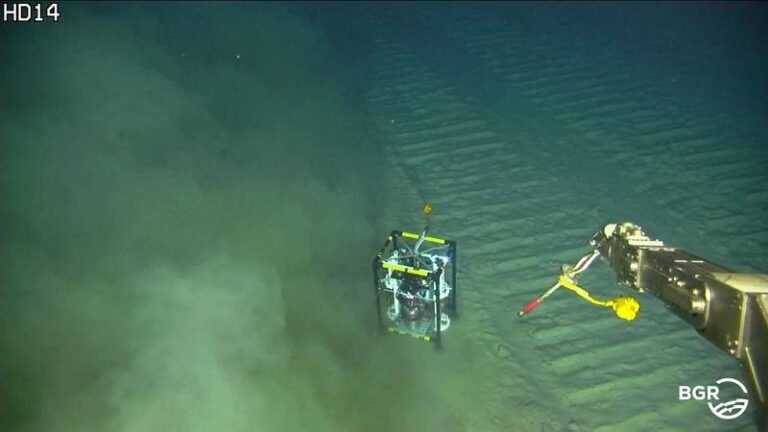The Environmental Impact of Deep-Sea Mining: New Study Reveals Spread of Sediment Plumes
Independent researchers from the MiningImpact project and the German Federal Institute for Geosciences and Natural Resources (BGR) have conducted a groundbreaking study on the environmental impact of deep-sea mining. The study, coordinated by the GEOMAR Helmholtz Centre for Ocean Research Kiel, focused on monitoring the test of an industrial pre-prototype nodule collector vehicle in the Clarion-Clipperton Zone in the eastern Pacific.
Key Findings
The researchers found that the spread of suspended sediment plumes generated during mining operations could reach up to 4.5 kilometers (2.8 miles) from the source. This is a significant distance that raises concerns about the long-term environmental impact of deep-sea mining.
Previous analyses of disturbance traces in the Clarion-Clipperton Zone and the Peru Basin have indicated that deep-sea mining will have lasting effects on biodiversity and essential ecosystem functions for centuries to come.
Study Details
The study, published in Nature Communications, provides the first detailed data on the far-field spatial footprint of mining-induced plume dispersion and redeposition beyond the mining area itself. The researchers closely monitored the test of a remotely operated pre-prototype nodule collector developed by the Belgian ISA contractor Global Sea Mineral Resources.
During the test, a nodule collector was deployed at a depth of 4,500 meters for 41 hours. The vehicle travelled approximately 20 kilometers and covered an area of 34,000 square meters. The sediment plume generated by the vehicle was measured using various sensors mounted on stationary platforms on the seafloor, as well as remotely operated and autonomous underwater vehicles.
Implications
The study found that a flow of dense suspended particles developed behind the collector, travelling downslope through steeper sections of the seabed for up to 500 meters. Natural near-bottom currents further spread the sediment plume, affecting sediment concentrations up to 10,000 times higher than under natural conditions near the mining site.
Most suspended particles resettled relatively quickly, aided by particle flocculation. However, a low-concentration plume of fine sediment particles was detected up to 4.5 kilometers away from the mining area. The researchers also mapped the mining imprints on the seafloor with millimeter-resolution, estimating the amount of sediment removed and redeposited in the mining area.
Conclusion
The findings of this study highlight the potential environmental risks associated with deep-sea mining, particularly in terms of sediment plume dispersion and redeposition. The researchers are continuing their analysis to further understand the long-term impacts of seabed mining on deep-sea ecosystems.

